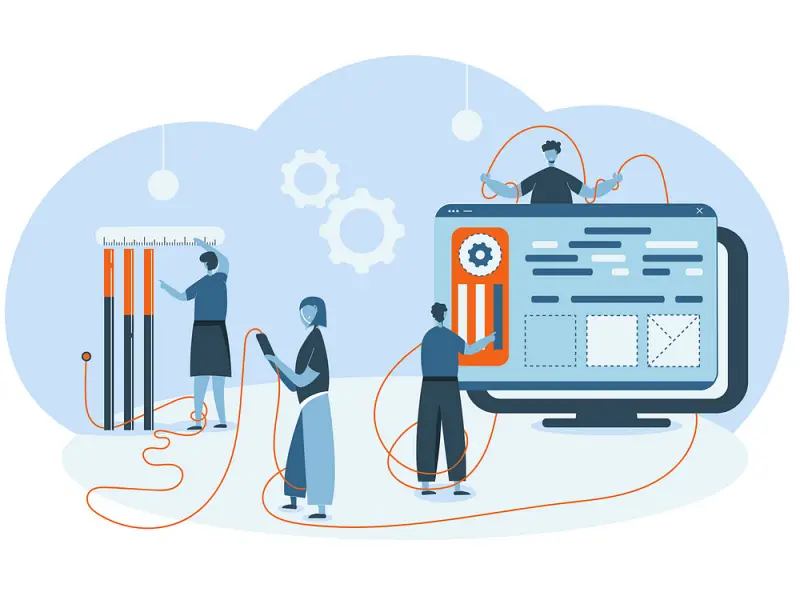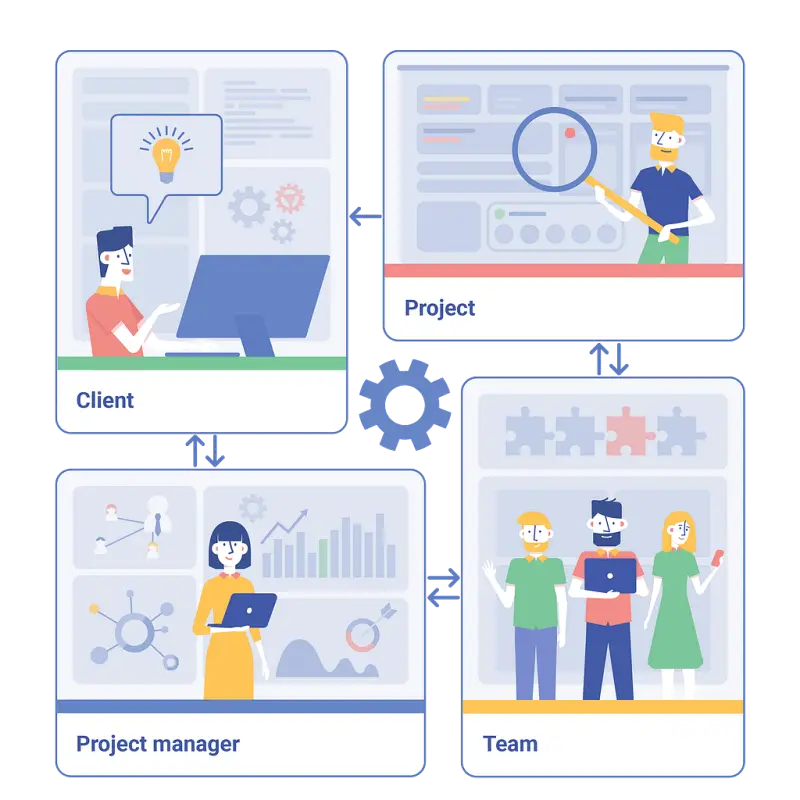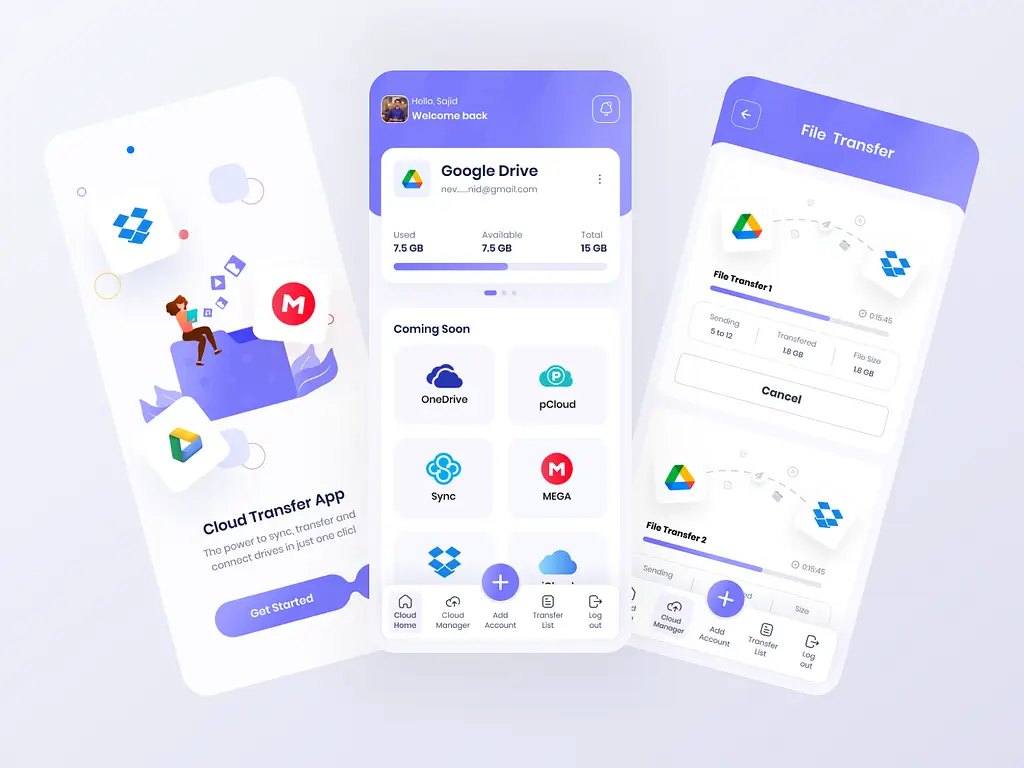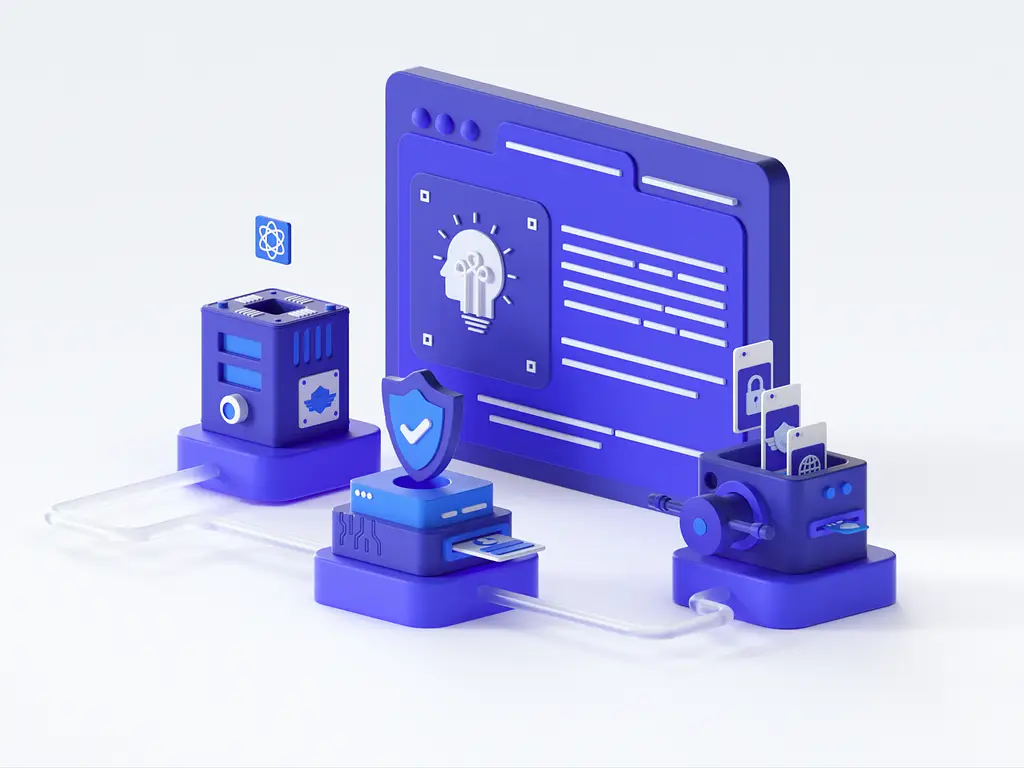Adaptive Software Development: Everything From A-Z
- TECHVIFY Team
- 0 Comments
In today’s fast-paced tech world, quickly adapting to changing requirements and market demands is crucial for any software development team. Traditional methods often struggle to provide the flexibility needed to keep up. This is where Adaptive Software Development (ASD) comes in. Evolving from Rapid Application Development (RAD), ASD provides a more adaptable, cyclical method for developing software.
According to the Project Management Institute, agile methodologies like ASD can boost project success rates by up to 28% compared to traditional methods. In this article, we’ll explore ASD’s core principles and phases, highlighting its strengths and how it compares to other methodologies.
Curious about how ASD can transform your development process? Let’s dive in!
I. Understand Adaptive Software Development (ASD)
Adaptive Software Development (ASD) evolved from an earlier agile framework known as Rapid Application Development (RAD). It helps teams quickly adjust to changing requirements or market needs by focusing on lightweight planning and ongoing learning. This adaptability ensures that teams can meet organizational goals. ASD promotes a three-phase process: speculate, collaborate, and learn.
II. Three Main Phases of Adaptive Software Development
1. Speculation Phase
The “Speculation” phase in ASD is similar to the planning phase in other development methods. Unlike traditional planning, which assumes certainty, ASD accepts uncertainty and room for improvement. This flexibility shifts the focus from tasks to results.
Predicting outcomes is difficult, so mistakes are likely during planning. ASD recognizes the unpredictable nature of software projects and involves all stakeholders in managing uncertainties.
During the speculation phase, teams typically:
- Prepare a mission statement considering all current scenarios.
- Build consensus on their end goals and share mission artifacts.
- Plan for changes and adaptations based on what they learn throughout the project.
2. Collaboration Phase
Collaboration is the phase where development happens. During this stage, teams with varied knowledge and experiences come together to create enterprise applications. They balance their efforts by working on predictable tasks and adjusting to changes.
Teams aim to complete tasks they can foresee while staying ready for changes due to requirements, technology, stakeholders, and other factors.

3. Learning Phase
In the Learning phase, teams engage in short designing, building, and testing cycles. These cycles allow teams to learn by making and correcting small mistakes. This iterative process helps teams improve their skills and knowledge over time.
This phase is akin to the review or retrospective phase in other methodologies. Teams evaluate the product from both technical and customer perspectives. They also assess their performance to identify opportunities for improvement.
More insights about Software Development:
III. Key Characteristics of the Adaptive Development Process
The speed of software development and delivery is crucial in a fast-paced environment. A resilient software development process is necessary to meet changing customer demands.
Mission Focused
One of the main characteristics of Adaptive Software Development in software engineering is its focus on objectives rather than specific tasks. ASD emphasizes achieving the project’s goals, and tasks are repeated until these goals are met. Teams make decisions and adjustments based on whether they help in meeting these objectives.
Iterative
The adaptive life cycle is iterative, involving repeated sets of activities or processes. This repetition helps teams incrementally improve and refine the software product.
Timeboxed
Timeboxing is a method of allocating fixed time periods to activities, a key principle in agile development. As an early form of agile methodology, ASD incorporates timeboxed periods, often 1-4 weeks, during which specific tasks must be completed. These short, time-boxed periods are known as sprints, and they ensure that development teams focus on completing specific tasks within a set timeframe.
Feature-Based
ASD focuses on delivering specific functionalities or features that meet user or customer requirements. It starts with the most important features for users or customers and builds other features incrementally. This approach ensures that the software product is developed in sprints, with each feature added in increments, leading to a product that satisfies all users and customers.

Risk Driven
Software projects often fail because teams overlook potential risks arising from uncertainty. Identifying and addressing these risks is a core characteristic of ASD. Teams work on recognizing risks related to technical issues, requirements gathering, and changing customer expectations. By doing so, the ASD process mitigates risks in software development and provides quick responses to resolve any issues.
Change Tolerant
The adaptive development approach is tolerant of changes in requirements, project goals, and user needs. Its iterative, time-box, and feature-based nature allows teams to adapt to changes at any stage. When there is a change in requirements or user expectations, teams can easily incorporate them in the next iteration. This ensures that the development process stays aligned with client needs and expectations.
Looking to Outsource Development?
Contact TECHVIFY – Vietnam’s Leading Offshore Software Development & Outsourcing Company, for a consultation and development services.
IV. Adaptive Software Development Benefits & Challenges
Like any other Software Development Life Cycle (SDLC), Adaptive Software Development (ASD) has its unique strengths and weaknesses.
1. Benefits of Adaptive Software Development
- Tailored for the rapid creation of complex software products.
- Short cycles help avoid costly errors or misdirections.
- Provides room to explore unexpected directions, enabling innovation.
- Promotes high transparency between the development team and project sponsor.
- Heavily integrates end-user feedback, enhancing the likelihood of positive outcomes and enriching the knowledge pool during collaboration.
- Rigorous testing of each short cycle minimizes bugs and vulnerabilities.
- Emphasizes results, ensuring accountability for outcomes.
2. Challenges of Adaptive Software Development
- The unpredictable environment requires a team with substantial experience and adaptability.
- A loosely defined initial plan centered on the project mission can lead to difficulties in maintaining focus.
- Sustaining high levels of user involvement throughout iterations can be challenging.
- Intensive testing in each cycle raises baseline costs.
- Frequent project changes can lead to minimal documentation, necessitating retrospective documentation once changes are solidified into the evolving product.
V. Comparing Adaptive Software Development with Other Methodologies
Below are detailed comparisons of ASD with other methodologies, presented in separate tables for clarity.
Adaptive Software Development (ASD) vs. Rapid Application Development (RAD)
ASD and RAD share several similarities due to ASD’s origins in RAD. Both emphasize quick iterations and rapid development but differ in how they handle user feedback and prototyping.
| Aspect | ASD | RAD |
|---|---|---|
| Origin | Derived from RAD. | Originated as a methodology emphasizing quick development and prototyping. |
| Development Speed | Emphasizes rapid development with short iterations. | Focuses on fast development, often through the use of reusable components and rapid prototyping. |
| Feedback Loop | Integral part of the process, with continuous user feedback directly implemented into the development. | Uses prototypes to gather user feedback, which is then used to refine and develop the final solution. |
| Iterations | Short iterations to quickly adapt to changes and refine the product. | Similar short iterations, but more focused on creating and refining prototypes before final implementation. |
| User Involvement | Continuous involvement of users through feedback and iterations. | Heavy user involvement during the prototyping phase, followed by adjustments based on feedback. |
| Focus | Delivering a workable solution in the least possible time while accommodating change and learning. | Delivering a functional prototype quickly, then refining it into the final product based on user feedback. |
Adaptive Software Development (ASD) vs. Extreme Programming (XP)
ASD and Extreme Programming (XP) both prioritize software quality and responsiveness to customer needs. However, XP incorporates more rigid client collaboration practices and specific development techniques like test-driven development.
| Aspect | ASD | XP |
|---|---|---|
| Development Cycles | Utilizes short development cycles to iterate and improve the software rapidly. | Employs short, frequent development cycles or releases to enhance the product continually. |
| Software Quality | Focuses on high-quality software through iterative development and continuous user feedback. | Emphasizes high-quality software with practices like test-driven development (TDD) and pair programming. |
| Customer Requirements | Responds to changing customer requirements through flexible and iterative processes. | Highly responsive to changing customer requirements, with the customer often part of the development team. |
| Client Collaboration | Encourages collaboration with clients, integrating their feedback throughout the process. | Mandates close collaboration, incorporating the client as a team member to ensure constant alignment with customer needs. |
| Testing | Intense testing in short iterations to minimize bugs and vulnerabilities. | Continuous testing through practices like TDD, where testing is an integral part of the development process. |
Adaptive Software Development (ASD) vs. Feature-Driven Development (FDD)
ASD and Feature-Driven Development (FDD) both use iterative and incremental approaches. However, FDD is more structured around delivering specific features, whereas ASD is component-based and focuses on user feedback and adaptation.
| Aspect | ASD | FDD |
|---|---|---|
| Development Approach | Iterative and incremental, focusing on continuous improvement and adaptation. | Iterative and incremental, but specifically feature-driven, focusing on delivering specific features in each iteration. |
| Focus | Component-based development, where the process is structured around developing and integrating components. | Feature-oriented development is centered around identifying, designing, and building features. |
| Iterations | Short iterations to quickly adapt to changes and refine the product. | Iterations structured around the delivery of features, with a clear feature list guiding the development process. |
| Documentation | Frequent changes can lead to minimal documentation, which may be addressed retrospectively. | Generally maintains better documentation due to the structured nature of feature lists and progress tracking. |
| User Involvement | Continuous user feedback is integral, ensuring the product evolves according to user needs. | User feedback is important but the process is more structured around predefined features |
Learn More On:
VI. Considering Adaptive Software Development (ASD) for Your Agile Framework
Adaptive Software Development (ASD) can be a highly effective approach to Agile development, particularly if you can ensure deep involvement from your users and view your products as continuously evolving entities.
When to Consider ASD
- User Involvement: ASD thrives on deep user involvement. If you can arrange for continuous and substantial feedback from your users, ASD can help you create a product that closely aligns with user needs and expectations.
- Continuous Evolution: If you see your product as something that will evolve over time rather than having a fixed end state, ASD’s iterative nature is a good fit.
- Risk Mitigation: The continuous testing inherent in ASD helps mitigate risks by identifying issues early in the development cycle.
- Innovation Opportunities: ASD encourages exploring new ideas and directions, which can lead to innovative solutions.
However, it’s important to recognize that these benefits come with increased baseline costs due to the intensive testing and iterative development processes.
When Another Agile Framework May Be More Suitable
- Fixed Vision: If you have a more rigid view of how the final product should look and are less open to changes, another Agile framework might be more appropriate.
- Team Experience and Adaptability: ASD requires a highly experienced and adaptable team to handle the levels of uncertainty it entails. If your team lacks this experience, it may struggle with ASD.
- User Feedback and Collaboration: ASD relies heavily on broad and deep access to user feedback and collaborative involvement. If you can’t provide this level of access, ASD may not be the best choice.
Conclusion
Adaptive Software Development (ASD) offers a flexible and dynamic approach to managing complex software projects. By focusing on speculation, collaboration, and learning, ASD helps teams adapt quickly to changes and deliver high-quality software that meets user needs. Its iterative and feature-based nature ensures continuous improvement and alignment with project goals.
Ready to transform your software development process? Contact TECHVIFY for expert consultation and top-tier software development services. Let’s turn your vision into reality. Reach out to us today!
TECHVIFY – Global AI & Software Solution Company
From Startups to Industry Leaders: TECHVIFY prioritizes results, not just deliverables. Accelerate your time to market and see ROI early with high-performing teams, AI (including GenAI) Software Solutions, and ODC (Offshore Development Center) services.
- Email: contact@techvify.com.vn
- Phone: (+84)24.77762.666





